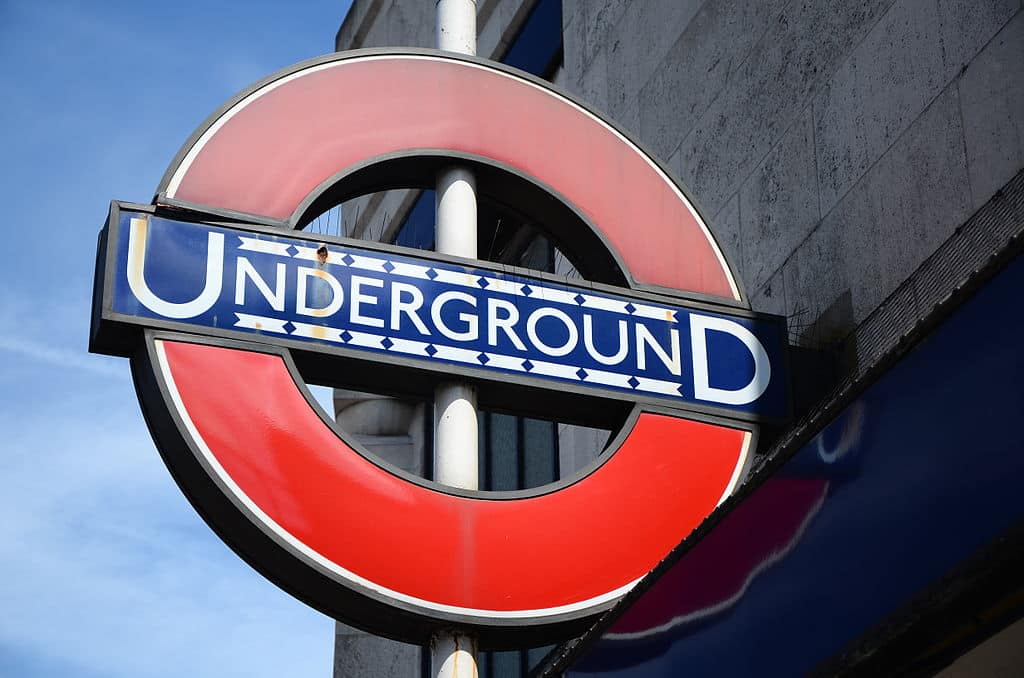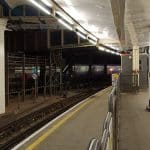Last Updated on 26/03/2023 by Alex Hamlyn
Table of Contents
London Underground
Secrets of the Underground – An Introduction
The London Underground, also known as the “Tube”, is a rapid transit system serving the Greater London area and some parts of the surrounding counties in England. It is one of the oldest metro systems in the world, having first opened in 1863 although it was first proposed in the 1830s as a solution to London’s rapidly growing population and alleviate the city’s mounting traffic congestion.
Today, the London Underground is an integral part of the city’s transportation network. It has evolved into one of the largest metro systems globally, boasting over 270 operational stations and transporting over a billion passengers each year.
The first line, the Metropolitan Railway, was opened between Paddington and Farringdon. These early stations formed part of the initial lines of the subterranean railway system, including the aforementioned Metropolitan Railway which began operations in 1863, and the District Railway, which commenced service in 1868.
Before 1950, the London Underground had built over 160 stations. This includes the stations that were built in the early years of the Underground, as well as those that were added as the network expanded to serve a growing population.
Today, the London Underground continued to expand in the decades after 1950, with new lines and stations being added to meet the increasing demand for public transportation in the city.
Closed London Underground stations
Over time, some stations became less economically viable. Passenger numbers shifted around the network as people moved to the suburbs, which required more track and more outlying stations. The early rush to build new lines and stations in the beginning, when every line was constructed by a different transport company and before the subway system was unified under a single transport authority, also meant there was an element of redundancy in the network, so some stations began to close.
It’s difficult to say exactly how many stations were closed on the London Underground by the 1980s. It’s estimated that several dozen stations were closed on the London Underground between the 1940s and the 1980s.
During this time, many stations were closed due to low passenger numbers, while others were closed as part of the modernization and expansion of the network. Despite the closures, the London Underground continued to grow and evolve, with new lines and stations being added to meet the increasing demand for public transportation in the city.
Abandoned London Underground stations
In addition to closures, redevelopments and new construction at existing stations meant that as new areas, lines and platforms were added, old areas were bricked and sealed off from the rest of the network. They exist today as ghost stations or shadows. Some abandoned stations are completely hidden from public view. Other stations can be glimpsed in the dark as the trains flash past stations sealed away for seventy years or more. One station, North End, was partially constructed but never finished, and one famous station hides a secret door…
Today there are many stations no longer in use. Their entrances have often been covered with false façades or hidden behind other buildings. These abandoned or disused stations have a rich and fascinating history, and some have even become the subject of ghost stories and legends.
In this overview, we will delve into some of the most intriguing facts and tales surrounding the disused or abandoned stations of the London Underground. From their background, architecture, to the paranormal legends that have arisen around them, this topic provides an in-depth look into a captivating and lesser-known aspect of London’s history.
Whether you are a history enthusiast, a paranormal aficionado, or simply curious about the London Underground, this subject matter offers a unique and intriguing perspective.
If you know where to look and what to look out for, you might be able to spot some of these old and abandoned stations across London. Suburban station closures are common too, and sometimes entire sections of line are shut down to save money, but these are typically built above ground. The closure of inner-city stations, with their hidden tunnels and mysterious pasts, makes for a much more intriguing history.
Below is a list of the most famous abandoned stations on the London Underground network.

Aldwych station
This is one of the most famous disused stations and it has been used as a location in several movies and TV shows. The station was closed to the public in 1994, but its façade remains intact and is used as a filming location. During World War I, this station was used as a storage facility for valuable works of art from the British Museum. The station was also used as a location for several films and TV shows, including “Atonement” and “V for Vendetta.”
British Museum station
This central station was also closed to the public in 1933 and its entrance was covered with a false building façade. This station was designed by the famous architect Leslie Green and is known for its distinctive ox-blood coloured tiles.
Down Street station
During World War II, this station was used as a bomb shelter and also served as the underground headquarters for the Prime Minister, Winston Churchill. Today its former entrance is disguised as a residential building.
York Road station
This station was closed in 1932 and its entrance was covered with a false building façade. This station was one of the smallest on the London Underground network and was often referred to as the “station that never was.”
Brompton Road station
In the second World War, this station was used as a government shelter and also served as a secret military command centre. Since then it has been closed and its entrance was covered with a false building façade.
King William Street station
This station was closed in 1900 and its entrance was covered with a false building façade.
Aldgate East Station
Blake Hall Station
Charing Cross Station
Kennington Loop
London Bridge Station
Mark Lane Station
Marlborough Road Station
North End Station
Ongar Station
This Central Line station closed in the 1990s due to low passenger numbers, but even though the station is closed, rumours of scorpions living at Ongar Station are still around.
South Kentish Town Station
St Marys Station
St Pauls Station
Are the abandoned London Underground stations haunted?
There are many ghost stories associated with the abandoned or disused London Underground stations, including the ones I mentioned earlier. Some people claim to have seen ghostly figures or heard strange noises in these abandoned stations and it’s not surprising that people have associated them with ghostly stories and legends.
Aldwych Station: Some people claim to have seen the ghost of a woman in a long dress wandering the platform at night. Some also claim to have heard strange noises and felt a cold presence in the abandoned station.
Down Street Station: This station has a reputation for being one of the most haunted on the London Underground network. Some people claim to have seen the ghostly figure of a World War II-era soldier walking the platform, while others have reported hearing strange noises and feeling an eerie presence.
Brompton Road Station: This station is said to be haunted by the ghost of a soldier who died in a tunnel during World War I. Some people have reported hearing strange noises and feeling a cold presence in the abandoned station.
If you’re interested in learning more about the ghost stories associated with these abandoned stations, you may want to look up the many books and websites that focus on the paranormal and haunted history of the London Underground.
Image credits
- London Underground Sign – Lachlan Fearnley, CC BY-SA 3.0, via Wikimedia Commons
- London Underground Map – Sameboat, CC BY-SA 4.0, via Wikimedia Commons
References
- https://secretldn.com/haunted-underground-stations/
- http://www.abandonedstations.org.uk/
- http://www.urban75.org/blog/the-fake-houses-at-23-and-24-leinster-gardens-bayswater-london-w2/
- https://en.wikipedia.org/wiki/List_of_former_and_unopened_London_Underground_stations
- https://www.ltmuseum.co.uk/hidden-london/secrets-london-underground/episodes


